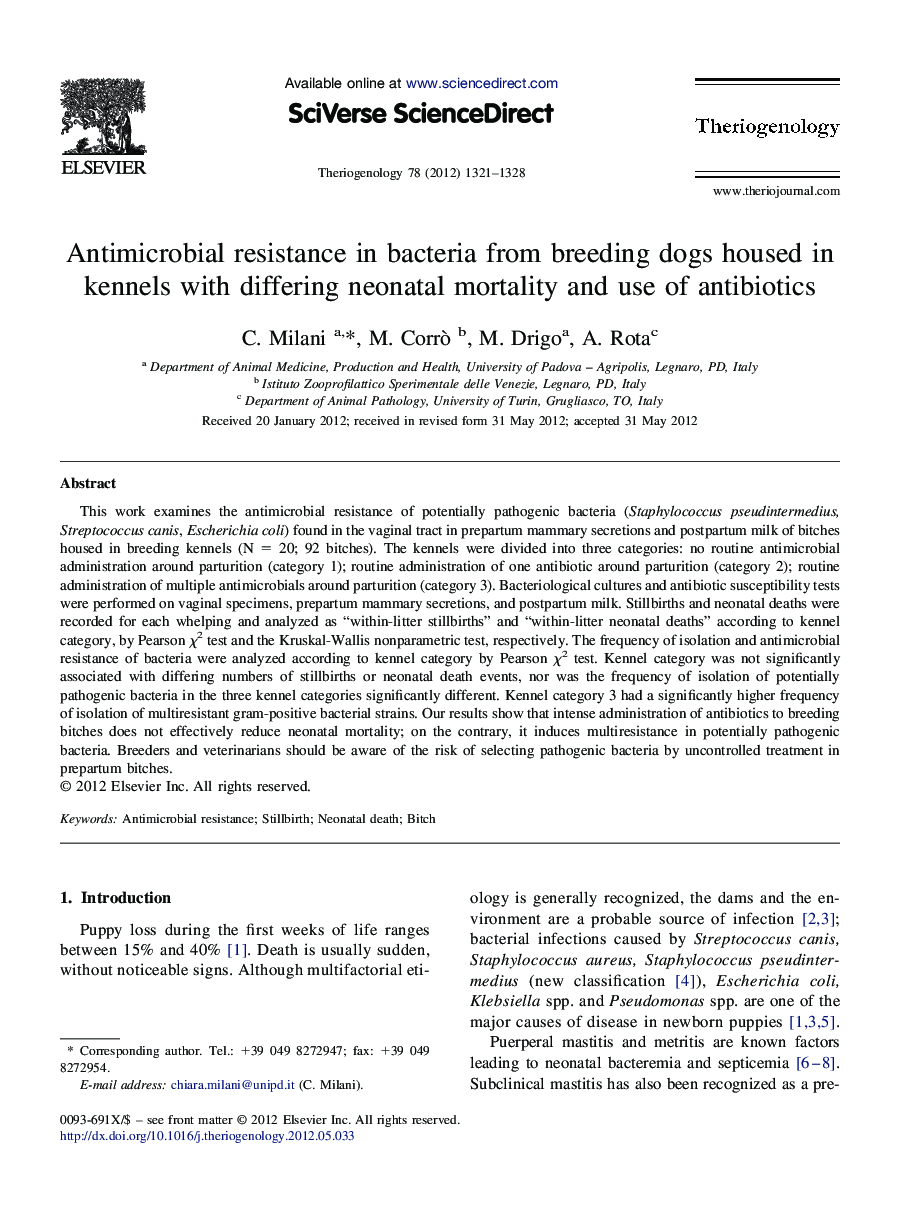| Article ID | Journal | Published Year | Pages | File Type |
|---|---|---|---|---|
| 10892379 | Theriogenology | 2012 | 8 Pages |
Abstract
This work examines the antimicrobial resistance of potentially pathogenic bacteria (Staphylococcus pseudintermedius, Streptococcus canis, Escherichia coli) found in the vaginal tract in prepartum mammary secretions and postpartum milk of bitches housed in breeding kennels (N = 20; 92 bitches). The kennels were divided into three categories: no routine antimicrobial administration around parturition (category 1); routine administration of one antibiotic around parturition (category 2); routine administration of multiple antimicrobials around parturition (category 3). Bacteriological cultures and antibiotic susceptibility tests were performed on vaginal specimens, prepartum mammary secretions, and postpartum milk. Stillbirths and neonatal deaths were recorded for each whelping and analyzed as “within-litter stillbirths” and “within-litter neonatal deaths” according to kennel category, by Pearson Ï2 test and the Kruskal-Wallis nonparametric test, respectively. The frequency of isolation and antimicrobial resistance of bacteria were analyzed according to kennel category by Pearson Ï2 test. Kennel category was not significantly associated with differing numbers of stillbirths or neonatal death events, nor was the frequency of isolation of potentially pathogenic bacteria in the three kennel categories significantly different. Kennel category 3 had a significantly higher frequency of isolation of multiresistant gram-positive bacterial strains. Our results show that intense administration of antibiotics to breeding bitches does not effectively reduce neonatal mortality; on the contrary, it induces multiresistance in potentially pathogenic bacteria. Breeders and veterinarians should be aware of the risk of selecting pathogenic bacteria by uncontrolled treatment in prepartum bitches.
Related Topics
Life Sciences
Agricultural and Biological Sciences
Animal Science and Zoology
Authors
C. Milani, M. Corrò, M. Drigo, A. Rota,
